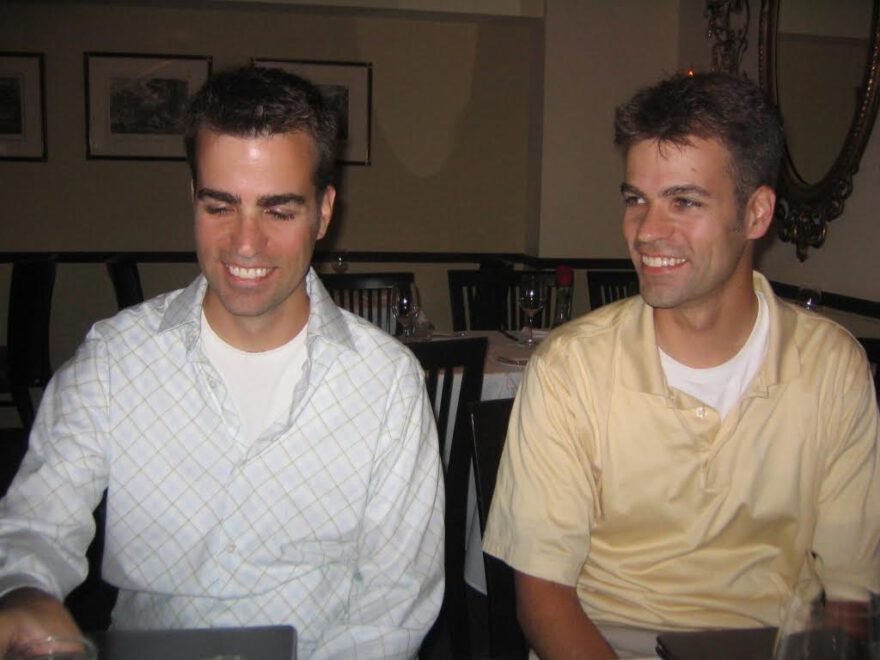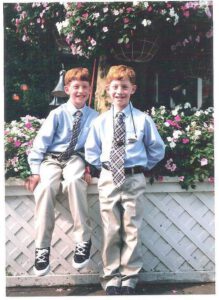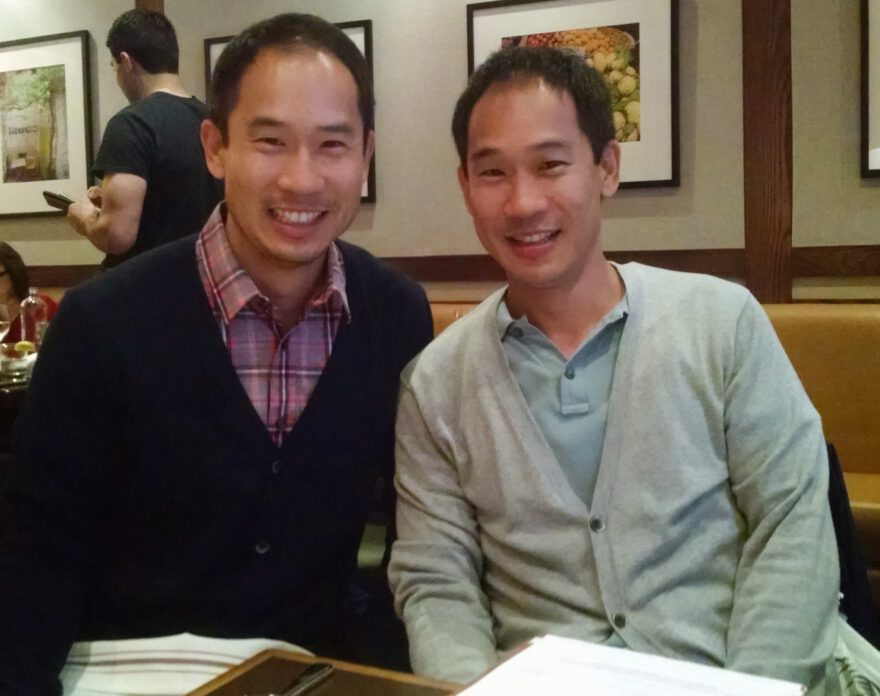Editor’s Note: For Twosday (Tuesday 2/22/22) We’re sharing a story we did a few years back about identical twins. Twins are endlessly fascinating for us as humans, and their stories are embedded in our folklore and mythology. But twins and the study of twins is also a cornerstone for genetic research helping us better understand the heritability of different traits, conditions and diseases. When we look at identical twins, we often are drawn more to the their similarities than their differences, and we’ve written about identical twins separated at birth and how meeting as adults reveals how uncannily much they have in common. But the differences can often be just as illuminating. Check out these stories.
Greg and Alex
The twins Greg and Alex Abbas were always really good in math and science. They sounded exactly alike on the phone. They could each play the piano, and they both became Eagle Scouts.
“We’ve always been more alike than different,” said Greg, a software engineering manager at Apple Inc.

Alex and Greg
In high school, they looked enough alike that they could switch places and fool the teachers. But despite all those similarities, the brothers were always told they were fraternal, not identical twins.
“That was mom’s assertion,” said Greg. “The doctor told her that there were two placentas.”
That old assumption, and others, led many twins and their parents to wrong conclusions about whether they were identical or fraternal twins. As many as one-third of identical twins and all same-sex non-identical twins have separate placentas. Even when there are two placentas, that might not be obvious to the delivering doctor.
It’s no wonder correctly identifying twins as identical or fraternal is harder than you’d imagine. One recent study found that 32 percent of parents of identical twins were confused or plain wrong about whether their children were identical or not. About 29 percent of parents of fraternal twins had it wrong.
In hindsight, it explains a lot to Greg and Alex. The two had always wondered if maybe the doctors had it wrong. Not long ago, Alex, a bioinformatician at Genentech with a Ph.D in biology, decided they should look at how similar they were genetically by testing with 23andMe.
“I thought there was a possibility that we might be semi-identical,” said Alex, referring to scarce sets of twins.
In those cases, the twins are half fraternal and half identical, having the same genes from one parent but different genes from the other. While there are plenty of critical medical reasons for knowing whether twins are identical, there are also less concrete reasons that are no less important.
“I wouldn’t say it’s a huge deal, but it is special to learn about yourself in this way,” said Alex.
What the brothers found out from testing is that they are indeed identical twins, not fraternal.
“The results were 100 percent shared DNA,” said Greg. “I said, ‘Wow, that’s not fraternal.’” While the brothers said they can’t claim that their lives were changed by the news or did anything differently because of what they learned, both said the information was extremely valuable.
“Being a twin is an intrinsic part of the way I look at my own identity, so getting it right and understanding myself is important,” Greg said.
The Abbas brothers are not the only twins who learned through using 23andMe that they are identical twins.
Mike and Matt
When Mike Convente, a Ph.D. student in Philadelphia, learned through 23andMe that he and his brother were identical twins, it made their bond somehow more special.

Mike Convente (left) and his brother Matt.
“The true essence of being a twin is to be identical,” Mike said. “Otherwise, you’re just siblings born at the same time.”
Tim and Nick
Tim Dang, a product manager here at 23andMe, and his brother Nick also grew up being told that they were fraternal twins but learned that they were identical twins after testing with 23andMe. Like the Convente twins and Alex and Greg, learning about being identical was an important detail for Tim and his brother.
“Knowing we’re identical made us think hard about our similarities and differences, identity and the life choices we made up to this point,” he said.

Tim Dang (left) and his brother Nick.
Erika and Kristin
Sometimes twins only learn that they are identical twins later in life, as in the case of Erika and Kristin.